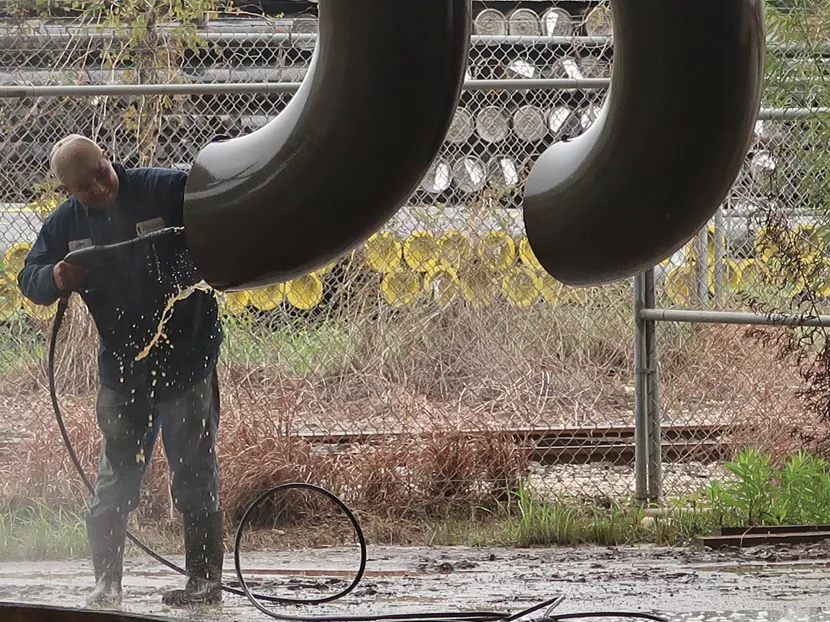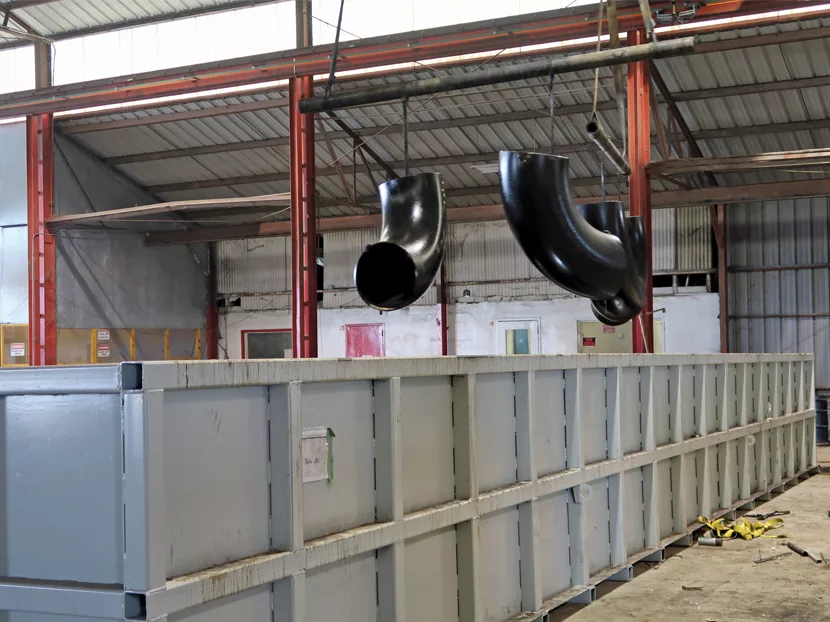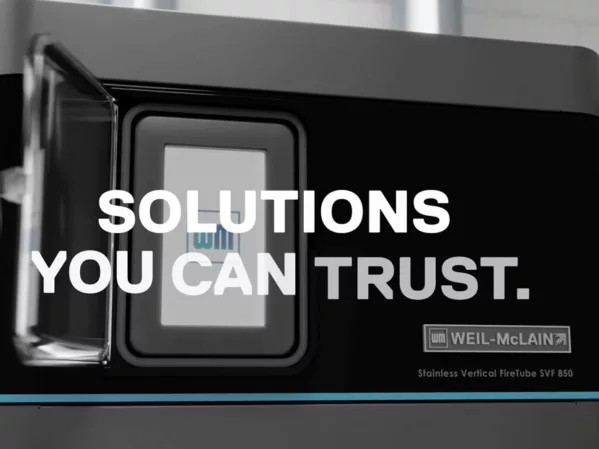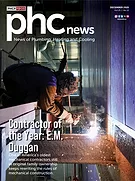As a distributor of pipe, one has many facets to consider — from what type of pipe to stock, to pipe size and material, to inventory management and stockyard distribution logistics. One facet that may be overlooked is how to maintain the health of pipe while it’s in your stockyard. Piping that shows rust, pitting, corrosion or weathering pose a challenge.
Are you able to read the markings on the pipe — its id tag — so vitally important to know origin, type of pipe and material it is made of? In addition, the inside of a pipe should be clean of debris for safety reasons. Do you have stock that falls into the “challenging” category? How do you clean pipe inside and out, and retain its structural and id marking integrity?
Paulsen Pipe has the answer — a custom cleaning experience using a new eco-friendly and biodegradable cleaning product. The company provides this service to its current customers, as well to other distributors that need to clean their inventory. The process is called Eco Steel Cleaning. It not only cleans pipe but helps distributors revive their inventory, save money and ultimately pass on to customers the peace of mind of a clean, quality product. In addition to cleaning pipe, the company can also clean fittings and valves.
Ed Paulsen, a 25-year veteran of the steel pipe distribution industry, founded Paulsen Pipe in 2012. The company is a distributor of carbon steel pipe and carries an extensive and diversified inventory. With locations in South Holland, Ill.,inois and Houston, the distribution points allow for quick deliveries throughout the United States.
Paulsen Pipe faces challenges like other distributors, where weather plays havoc on trying to maintain a healthy environment for pipe storage. Deciding to provide the value-added service of pipe cleaning to its customers, the company contracted with a small niche company that cleaned pipe in an environmentally friendly way.
Why? Because clean pipe, inside and out, gives purchasers confidence that the end product be a quality product. Pipe can become contaminated and weathered, especially when stored out in the elements. The rust, oxidation and debris on the outside of the pipe can cover the factory markings.
The inside of pipe holds another challenge. “Loose scale, vermin, rocks, stones and garbage cause havoc on pumps — causing a challenge for the end user,” Paulsen says. When oxidation and rust happen, it can degrade the pipe to the point of the markings on the material being unreadable. When this happens, it’s hard to sell the pipe as the distributor is unable to substantiate its place of origin, the type of pipe and all other information needed to be secure in sale and use. And, if the pipe has been stenciled, there is the human factor of error, with incorrect information stenciled back on the pipe. For this reason and others, clean, original markings are most desired.
In is not uncommon for a shipment of pipe to be rejected and sent back to the purchase source if the product is not clean. “Moving the product, delivering it, having it rejected and the return logistics requires time and money,” Paulsen states.
If the stenciling is lost and the pipe cannot be identified, in many cases, the product will need to be scrapped and the loss could be immense. Cleaning can fix this problem.
“It’s a preventable situation,” Paulsen says.
When the pipe-cleaning business wanted to sell, Paulsen purchased the company. He knew he could take it to the next level — going nationwide and expanding the market on what it could clean for customers. And in the process, provide the cleaning service to other distributor companies as the new option for providing a better product.
A Better Way
Traditional methods of pipe cleaning include pickling the steel, where a solution called a pickle liquor (a caustic solution containing acid) is used to remove surface impurities such as stains, inorganic contaminants, rust or scale from ferrous metals, copper, precious metals and aluminum alloys. A drawback to pickling is that it removes everything — from the debris to the pipe lacquer and markings.
The sandblast method is just that — blasting with sand – which is a noncaustic method but only cleans the outside of the pipe. It also may remove the pipe stencils.
Paulsen Pipe understood one could “revitalize” its (and others) inventory by using the environmentally friendly process that removes inside and outside contaminants while keeping the markings intact. In addition, it serves as a safety aspect. Impurities from inside a pipe can clog or destroy pumps. Fusion-bonded pipe that has rusted provides a safety issue. When rust occurs, “the carbon in rust absorbs the smell of natural gas, so not cleaning the pipe, or installing a very rusty piece of pipe for natural gas, you’re actually diminishing the safety factor,” Paulsen states.
He adds: “Once rust is neutralized, you’ve set the clock back on this product. Rust is like an infection; you can slather lacquer over it but it is still festering underneath, eating away at the steel. ID pitting is just as relevant as OD pitting. Customers don’t see this until the pipe is back in the shop. The fabricator cuts it open and sees there is an ID steel loss, and other issues. This is a big and expensive problem. “
The company is passionate about its cleaning service and offers the process to companies in many industries, as this problem is not unique to the PVF industry.
A Simple Process
The Eco Steel Cleaning process involves rinsing and dunking products into large tanks. Paulsen Pipe houses this service on its 11-acre property in Houston, where a separate large building houses three tanks custom made for the Eco Steel Cleaning process. The tanks are large enough to fully immerse double random lengths of pipe. The building is outfitted with an overhead crane lift, which allows for ease in moving pipe from tank to tank.
The process starts with a fresh water rinse of the material, which is then immersed in one of the large tanks filled with fresh water — this is where the initial debris is loosened and removed from the pipe. After the initial rinse in the soaker tank, the pipe is lifted and placed into the second tank, which holds the customized solution. Timing for each is calculated as well.
“Welded pipe cleans up very quickly,” Paulsen says. “Seamless pipe takes a little longer due to its porous nature — it needs to soak to get into the pores because of the hot-finish aspect of the production. Chrome seamless takes us the longest, a few more hours.” After the cleaning soaking, the product is removed and rinsed again, and inspected for any areas that might require a power wash. The final step is applying the rust inhibiting lacquer back to the OD of the pipe, which brings back the clean look and reveals the original markings. The typical process takes approximately 4-8 hours from start to finish.
“Our process cleanses the inside and outside, without removing any of the existing lacquer that’s still on the product. Paulsen notes. “And it brings back the real, original identification. And that’s unique.”
Many types of steel products (not just pipe) can be cleaned using this process. Carbon and stainless material can benefit as well, with each cleaning solution and process customized for the material.
“We were approved by Toshiba Power to clean its spools prior to installation,” Paulsen explains. “The engineers in Japan were concerned about putting its product through an acid bath. They didn’t want ID sandblasting because it leaves a residue not able to be blown out, especially in the larger spools. The alternative was the safe, eco-friendly alternative of Eco Steel, which fully immerses the product without being harmful to the steel.”








